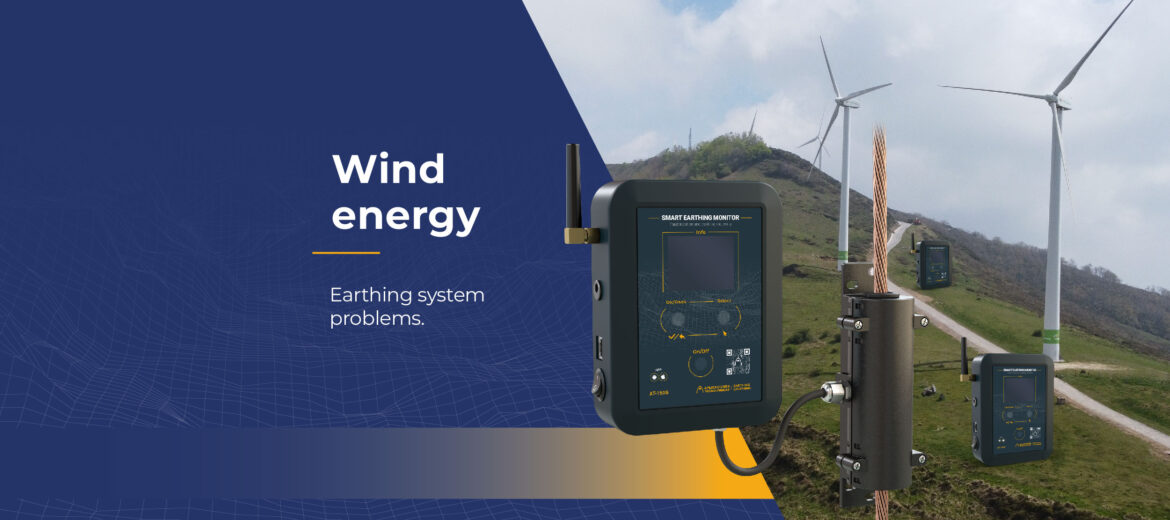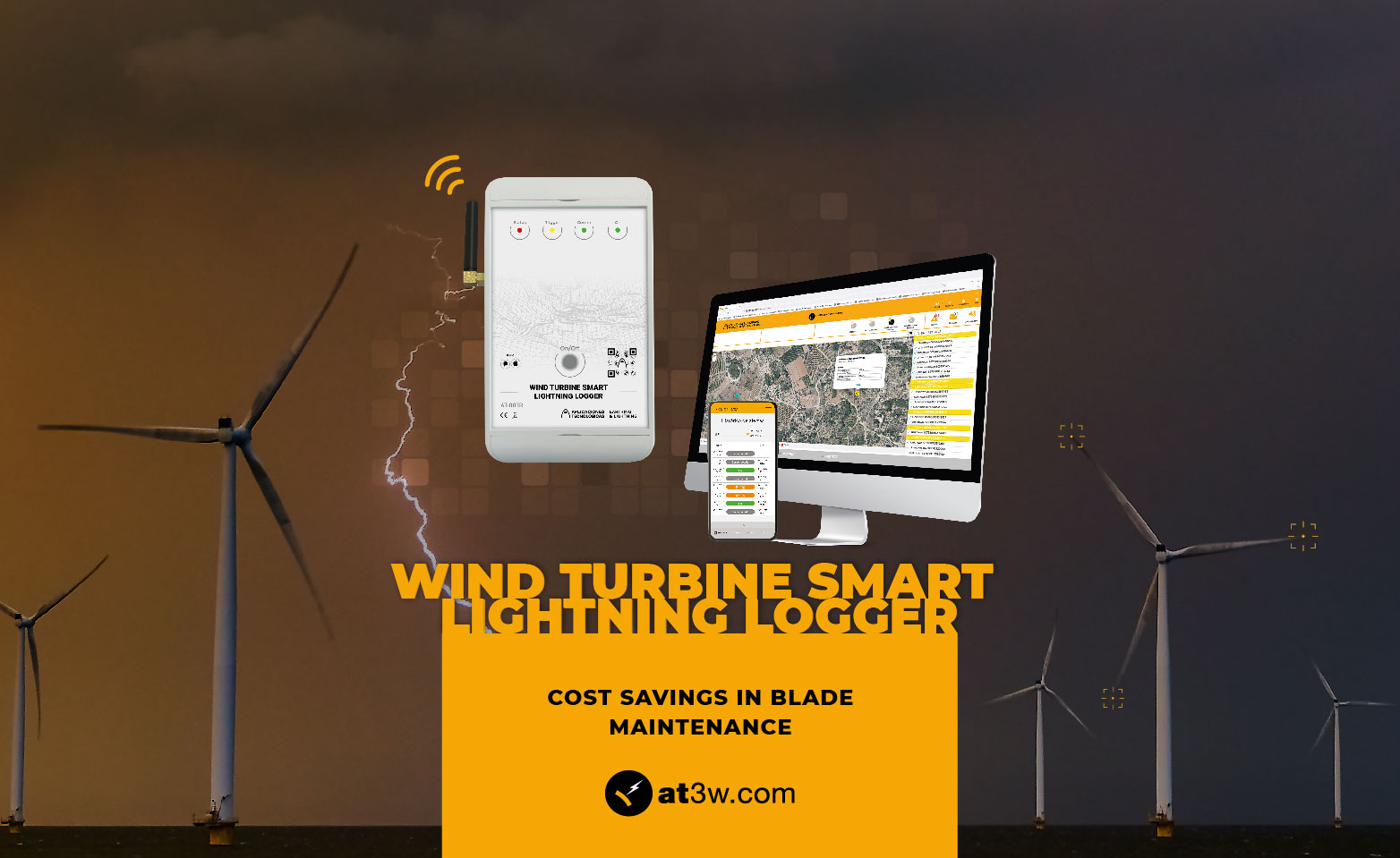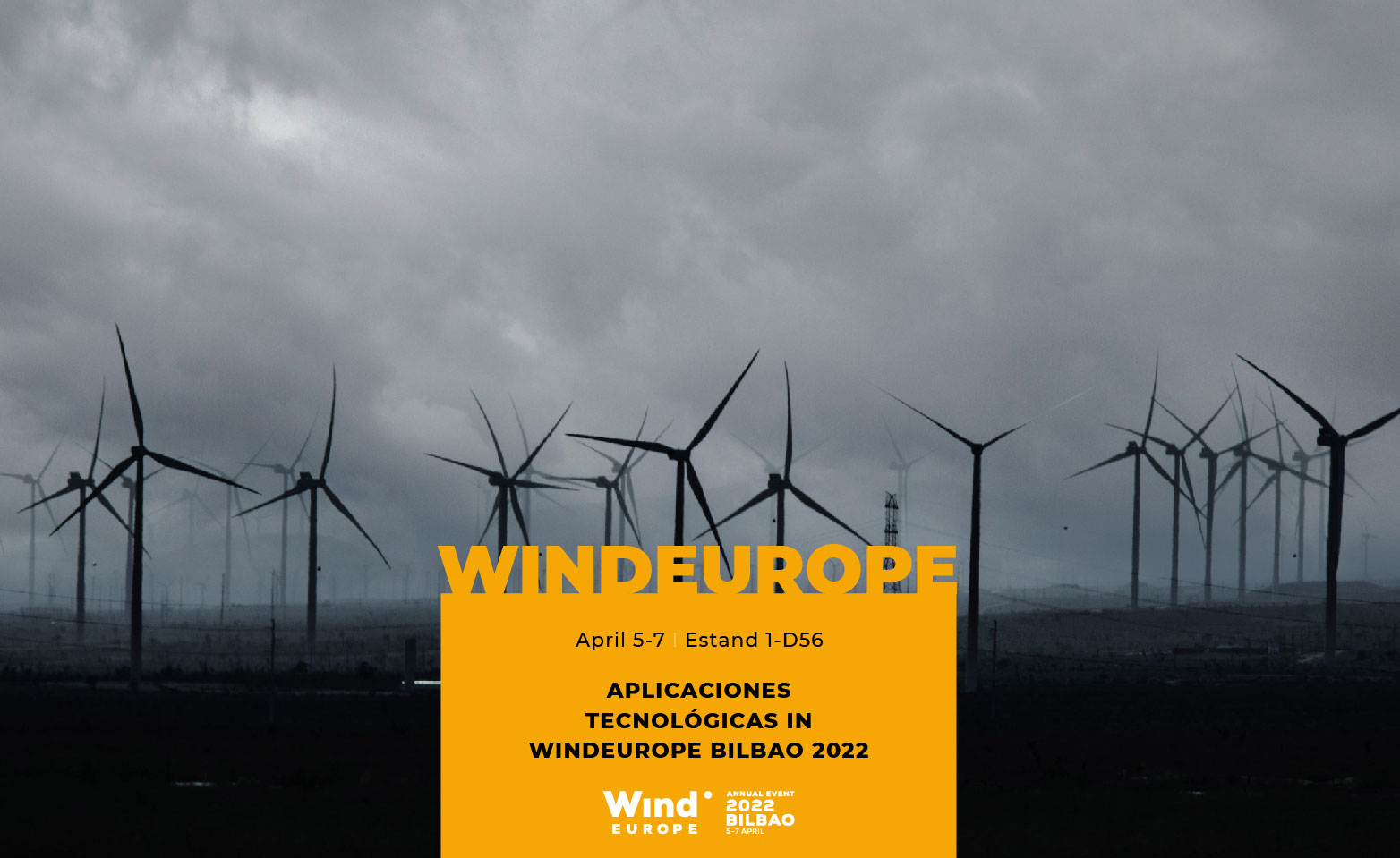The wind industry is one of the most cost-competitive renewable energies globally. In an increasingly interconnected world, the sector must continue to innovate, for example through digital transformation. Smart technologies collaborate in solving the problems that, due to their characteristics and locations, wind farms face concerning grounding systems. For this reason, Aplicaciones Tecnológicas S.A. offers professional services for geoelectric studies and grounding 4.0 projects. Furthermore, Smart Earthing Monitoring System allows centralised and unattended monitoring of the wind turbine earthing systems and the wind farm substation.
The Global Wind Energy Council (GWEC) in its Global Wind Report 2023 points out that we are facing an energy crisis derived from the high energy prices that the world has been experiencing since the COVID-19 pandemic and also after the Russian invasion of Ukraine. According to the organisation, the crisis is a consequence of postponing the energy transition, which, moreover, is being carried out randomly. As a result, markets remain dependent on fossil fuel volatility, subject to geopolitical pressures and anti-competitive practices.
Renewable energy is the most efficient way to achieve energy autonomy and security, lower electricity costs and decarbonise energy systems. The demand for renewable energy continues to grow and most of this growth is coming from the wind and solar photovoltaic sectors.
In June 2023, the wind industry reached a milestone of 1 terawatt (TW) of global installed capacity in its more than 40 years of development. During these four decades, it has demonstrated that it is a technology with a high level of resilience and maturity, being one of the most cost-competitive energy sources. As such, market predictions point to it playing a unique role in the energy transition.
On the other hand, the current forecast is for exponential growth so that, in just 7 years, the same capacity will be deployed as that installed in the last 40 years.
The Global Wind Report 2023 stresses that the wind sector must demonstrate that it can continue to innovate in an increasingly interconnected world.
In the previous year’s Global Wind Report 2022, much emphasis was placed on technological innovation as one of the main drivers of the cost reductions behind its leadership, along with solar PV, in the renewable energy sector. In this report, special attention is given to digitalisation because it converges with decarbonisation in the rapid digital transformation of the energy system.
The industry is experimenting with Big Data to manage demand, improve predictability of weather patterns and renewable response, and enable consumers to become prosumers.
Both digitalisation and AI are improving the performance of renewable assets, reducing operating costs and the Levelised Cost of Electricity (LCOE). AI can optimise production and use algorithms to detect potential equipment failures and perform predictive maintenance before they become major problems.
At Aplicaciones Tecnológicas we are aware that smart technologies and digitalisation are the future and, for this reason, we have incorporated them into our areas of expertise, as in the case of grounding systems. In this article, we talk about how the product and service solutions in our portfolio solve the problems of grounding systems, optimising the safety and operational financial efficiency of assets in the wind energy sector.
Geoelectrical studies service to optimise an earthing system design
The local electrical resistivity is a critical parameter for the grounding resistance of wind turbines. The measurement of soil resistivity is then necessary to design a safe grounding system, as wind turbines are distributed over wide areas with different types and characteristics of the ground.
However, due to the spacing between wind turbines, the ground characteristics from one location to another may differ. Therefore, the solution in one case may not meet the requirements in another case.
In these areas, a proper and individualised design of the earthing system is essential to guarantee the required safety levels (step and touch voltage) as well as the earthing resistance value.
Preferably, the resistivity should be measured at those points where a wind turbine is installed which can, in the event of a fault, generate a dangerous current flow to the earthing system.
However, designing an earthing system without real resistivity values may present a safety risk due to the use of tabulated values, which may be optimistic in some cases.
In Aplicaciones Tecnológicas S.A. we have developed a method that optimises the taking of measurements for the geoelectric study of the wind farm project. Our professional service uses intelligent technology and IoT communications. The information provided by the study is used to determine the layout, depth, number and type of elements of the grounding system. Thus, the initial requirements of the project, both regulatory, safety and functional, can be met.
The most common problems of earthing system projects in wind farms
The grounding systems of wind farms, like those of any electrical system, must ensure the effective operation of protective devices and prevent voltage gradients in the event of a fault that could cause damage to equipment or threaten people’s lives.
The installation of grounding systems in wind farms is often limited by topographical factors. These factors make it difficult to adequately dimension the grounding system to achieve the low ground resistance of each wind turbine and the overall resistance of the wind farm. The main challenge facing engineering and architectural firms is to find the best compromise between technical properties and costs, depending on the specific application of the system in a given terrain.
Therefore, expert knowledge is required in the realisation of the grounding project to ensure the efficiency, safety and reliability of the grounding systems. Correct design and execution avoid the aforementioned serious consequences. In addition, any subsequent adaptation is complicated when the installation is buried.
Aplicaciones Tecnológicas S.A. offers a professional earthing 4.0 design service. Our service is differentiated by the added value of smart technology in the monitoring of earthing. The SEMS (Smart Earthing Monitoring System) technology, which we will explain in the following section, enables the digital transformation of earthing systems for safety and continuity of service.
The professional earthing system projects 4.0service is based on a technical team of experts together with state-of-the-art IT tools.
Smart Earthing Monitoring System for Earthing 4.0
Monitoring of the earthing system allows optimisation of safety and costs for verification of the structure’s earthing. This includes periodic regulatory verification, identification of incorrect connections, continuity of power cable screens, and verification of the continuity of the earth cable (assessing breakage, vandalism, etc.). On the other hand, verifying the earth of electrical equipment facilitates the verification of the earth conductors of electrical panels and structures.
Smart Earthing Monitoring System, developed by Aplicaciones Tecnológicas S.A., is the system for distributed processing and centralised monitoring of earthing points. It works by employing data collection with distributed sensorisation. This information is transmitted via IoT connectivity to the secure data centre. The advanced artificial intelligence algorithm processes it to provide accurate diagnostics that the user receives as objective multi-channel alerts.
In short, the Smart Earthing Monitoring System turns the earthing system into a huge sensor to remotely alert on the operation of the installation. Furthermore, our SEMS technology applies to both planned and operational wind farms.
SEMS can determine the current distribution in the different nodes of the grid, accurately discriminate the earthing resistance of the monitored asset and assess the condition of the screens of the power cables.
The wind industry is in a state of rapid growth. This will be accelerated as it seeks to comply with the Paris Agreement, as well as to achieve energy autonomy without dependence on the geopolitics of fossil fuels. In its process of continuous innovation, smart technologies are allied to solve the specific problems of this industry.
The solutions of Aplicaciones Tecnológicas S.A. collaborate in the resolution of the difficulties related to the grounding systems of wind farms to achieve maximum safety and operational-financial efficiency to ensure compliance with the return on investment (ROIs).
If you would like to find out more about the grounding issues facing the industry and how smart technologies can solve them, you can contact our experts at the following link.
References
Deshagoni, R. G. Design and Analysis of Earthing System for Wind Turbine Generators from Lightning Discharge Currents. (Victoria University of Wellington, 2020). doi:10.26686/WGTN.17143826.V1
Esmaeilian, Shayegani Akmal, y Salay Naderi, «Wind Farm Grounding Systems Design Regarding the Maximum Permissible Touch & Step Voltage». 2012 11th International Conference on Environment and Electrical Engineering (2012), p. 74-79
Hansen, Østergaard, y Christiansen, «System Grounding of Wind Farm Medium Voltage Cable Grids». In Nordic Wind Power Conference (NWPC) 2007
Kontargyri, Gonos, y Stathopulos, «Study on Wind Farm Grounding System». IEEE Transactions on Industry Applications (2015), 51 (6), p. 4969-4977
Lorentzou, Hatziargyriou, y Papadias, «Analysis of wind turbine grounding systems». Electrotechnical Conference. MELECON 2000. 10th Mediterranean (2000), 3, p. 936-939


